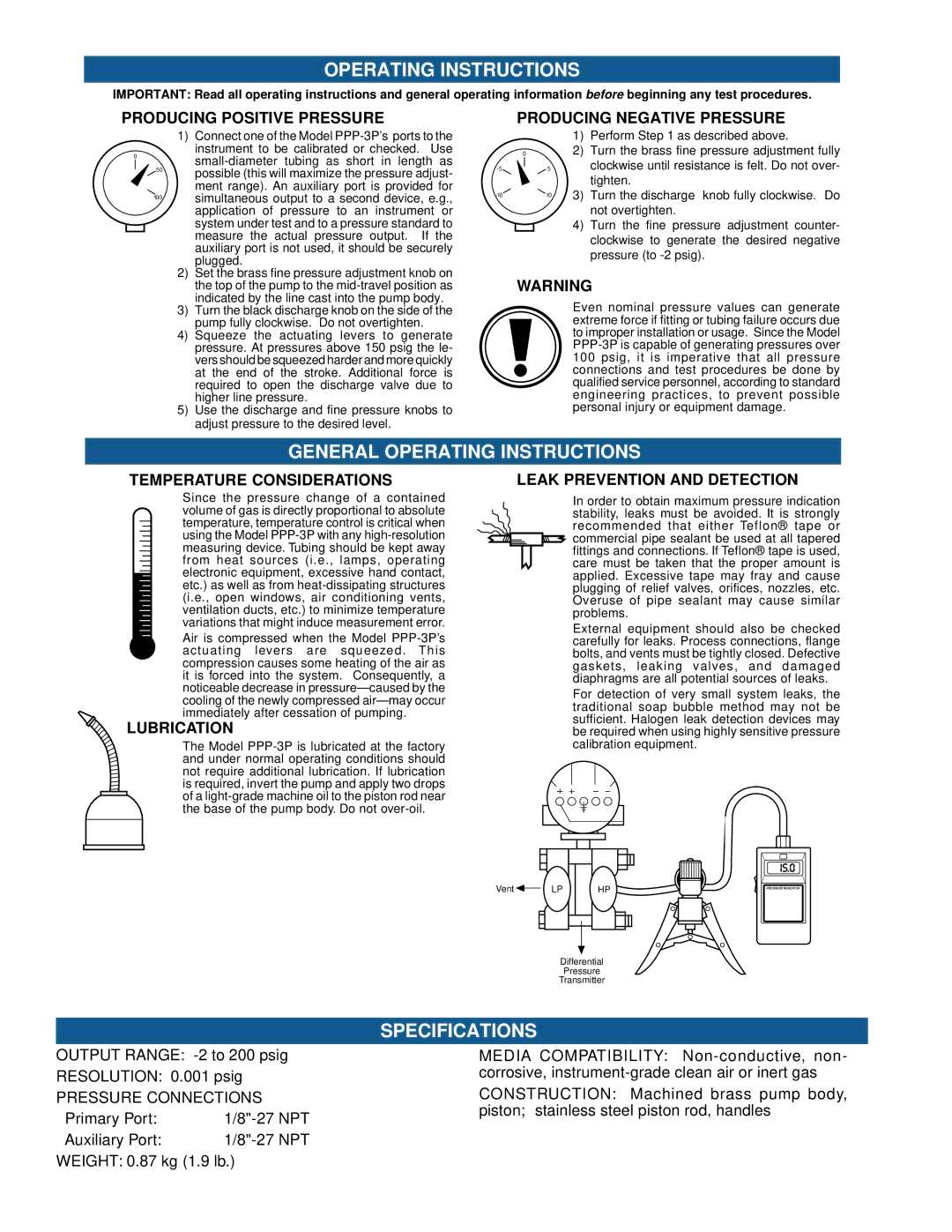PPP3P specifications
Omega Engineering, a leading name in the field of process measurement and control, offers a comprehensive line of temperature, pressure, and flow instrumentation. Among its portfolio, the PPP3P pressure transducer stands out as a reliable and highly efficient solution for various industrial applications.The PPP3P pressure transducer is designed specifically for measuring pressure in fluids and gases, making it versatile for a range of sectors including manufacturing, pharmaceuticals, and HVAC. This device incorporates advanced technologies to yield precise and stable pressure measurements, which is vital for maintaining optimal process control.
One of the main features of the PPP3P is its robust construction, which ensures reliability even in harsh environments. The transducer boasts a stainless steel housing that provides excellent resistance to corrosion and mechanical stress, enabling it to perform optimally in challenging conditions. With a pressure range that can accommodate both low and high pressures, it is adaptable for various applications, making it an essential tool for engineers and technicians.
The PPP3P also integrates state-of-the-art sensing technology, which enhances its accuracy and response time. Its piezoresistive sensing element transforms pressure into an electrical signal that is proportional to the pressure applied, delivering linear and repeatable output. Users can expect high accuracy levels, with the transducer offering a typical accuracy of ±0.25% full scale, ensuring that even the smallest fluctuations in pressure are detected.
Moreover, the PPP3P model includes digital output options, allowing for seamless integration with modern control systems. The ability to communicate via protocols such as RS-232 and RS-485 enables real-time data acquisition and monitoring, improving overall operational efficiency.
In terms of installation and usability, the PPP3P is designed for easy mounting and flexibility. It features various electrical and pressure connection options, allowing users to tailor the transducer to their specific system requirements.
In conclusion, the Omega Engineering PPP3P pressure transducer combines durability, accuracy, and advanced technologies, making it a valuable addition to any industrial toolkit. Its ability to perform reliably under a wide range of conditions ensures that it meets the demanding needs of various applications, solidifying its role as a trusted instrument in process measurement and control.

